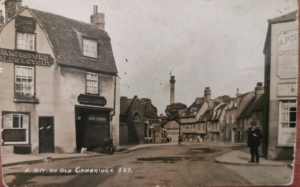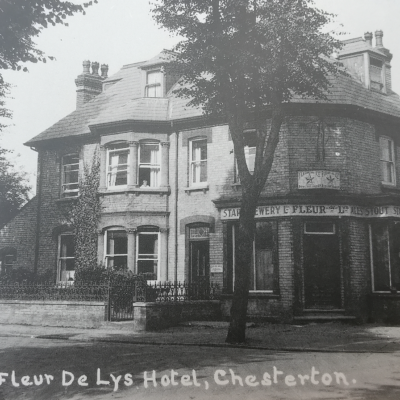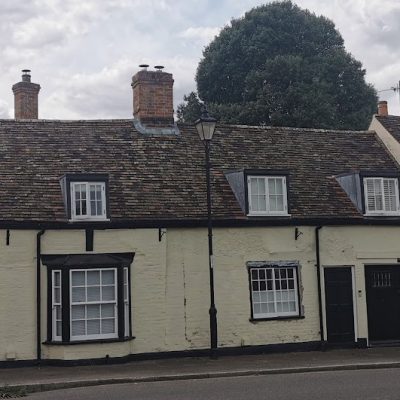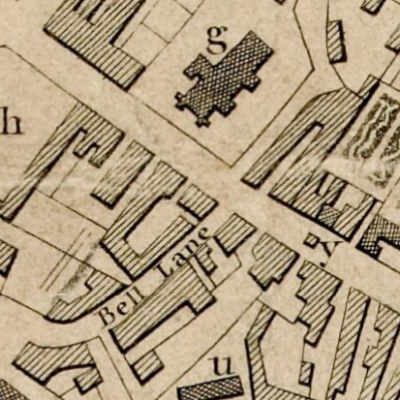Search by topic
- archaeology
- Building of Local Interest
- charity
- church
- crime
- dressmaker
- fire
- Great Eastern Railway
- Listed building
- Mapping Relief
- medieval
- oral history
- poverty
- Public House
- Rattee & Kett
- Religious House
- Roman
- scholar
- school
- Then and Now
- tudor
- women
- work
- world war one
- world war two
Search by text
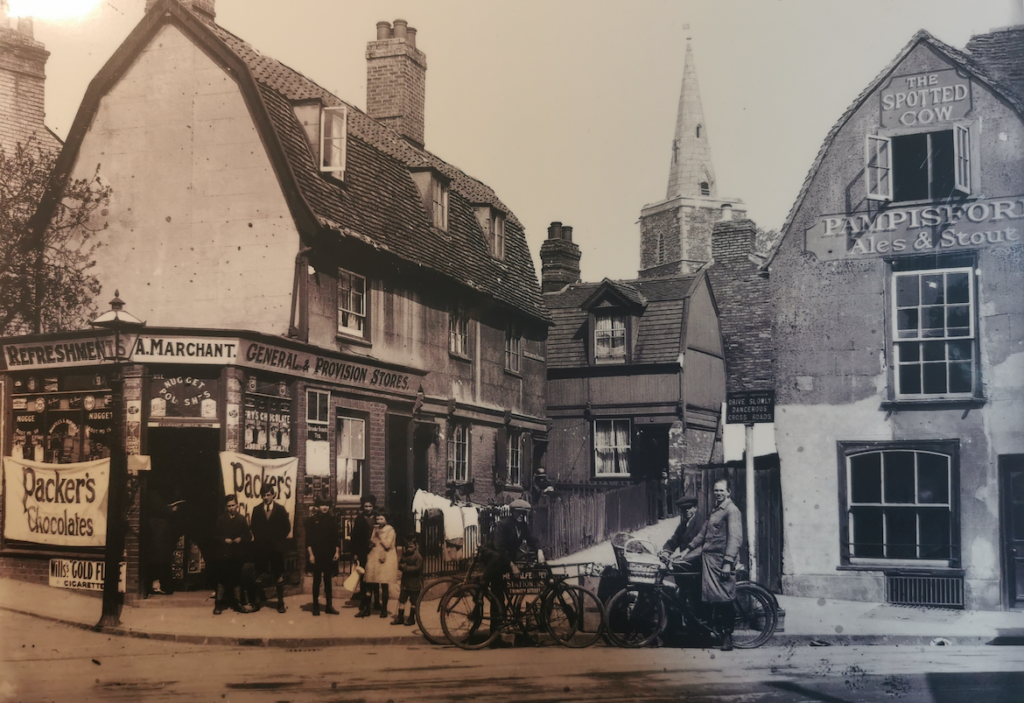 The Spotted Cow, Northampton Street and former Northampton Boot Stores and entrance to Kettle's Yard
The Spotted Cow, Northampton Street and former Northampton Boot Stores and entrance to Kettle's Yard40 Northampton Street, The Spotted Cow
History of 40 Northampton Street
There are deeds for the Spotted Cow in the County Record Office dated from 1695 to 1921
1839 Mr Richardson (London Gazette)
1851 Nicholas Jemmerson (Gardner’s)
1852 John Richardson (Slaters)
1861
Mary Mansfield, 60, blacksmith’s wife, b Norfolk
George, 20,
Elizabeth, 22,
Charlotte Wells, 72, b Norfolk
Spotted Cow Yard:
(1) John Wolfe, 32, groom, b Cambridge
(2) Richard Richardson, 80, drover, b Cambridge
(3) Edward Allensby, 60, waterman, b Ely
(4) & (5) John Franklin, 42, bricklayers labourer, b Chesterton
1871
Nicholas Jemmerson, brewer & maltster, 56, b Cornwall
Elizabeth, 51, b Swavesey
Ernest, butcher, 25, b Jersey
1874
George Jemmerson
1879 N G Jemmerson (Post Office )
1881
Nicholas Jemmerson, brewer & publican, 66, b Cornwall
Elizabeth, 60, b Swavesey
Ann Crane, wifes sister, 60, b Swavesey
Spotted Cow Yard:
(1)
Augusta Franklin, 53, college servant, b Bury St Edmunds
(2)
Daniel Pettet, 38, gardener’s labourer, b Suffolk
Susan, 46, b Grantchester
George, 13, gardener’s labourer, b Cambridge
Harry, 5, b Oakington
Kate, 8, b Cambridge
George Phillips, lodger, 17, hostler, b Oakington
(3)
Sarah Heap, 74, none, b Cambridge
Ann Looker, boarder, 73, b London
(4)
Mary A Williams, 60, none, b Cambridge
(5)
Ernest H M Emmerson, 36, hay dealer, b Jersey
Anne, 35, b Histon
1888 William Lees (Kellys)
1889
Jane Elsden is described as living in Spotted Cow Yard. (See Rose and Tulip).
1891 Spotted Cow
Mary Humphreys, 62, publican, b Herts
1 Spotted Cow Yard:
Frederick W Piddock, 30, fish curer, b Cambridge
2 Spotted Cow Yard
George Taylor, 48, labourer, b Landbeach
1913 The Spotted Cow
Mrs Annie Twinn
The Spotted Cow Yard:
1-2 Mrs Annie Twinn
3-4 Mrs Emma Taylor
By 1937 the Spotted Cow had been demolished.
Contribute
Do you have any information about the people or places in this article? If so, then please let us know using the Contact page or by emailing capturingcambridge@
License
This work is licensed under CC BY-NC-SA 4.0





